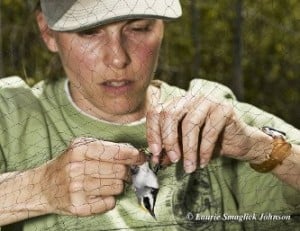
Amber Roth has received $25,000 of funding from the Western Great Lakes Bird and Bat Observatory to coordinate the Midwest Landbird Migration Monitoring Network. For this award, Roth will write and edit the Midwest Landbird Migration Monitoring Network Strategic Plan in collaboration with the US Fish & Wildlife Service and the Western Great Lakes Bird and Bat Observatory. Along with the grant, comes Roth’s new title of Midwest Landbird Migration Monitoring Network Coordinator . The strategic plan will lay out a road map for coordinating bird monitoring and research efforts toward objectives of the Midwest Coordinated Bird Monitoring Partnership (http://midwestbirdmonitoring.ning.com/). The goal of the plan is to provide guidance for improving usage of data generated by the network of partners across the Midwest to better address priority migration information needs at the regional scale.
